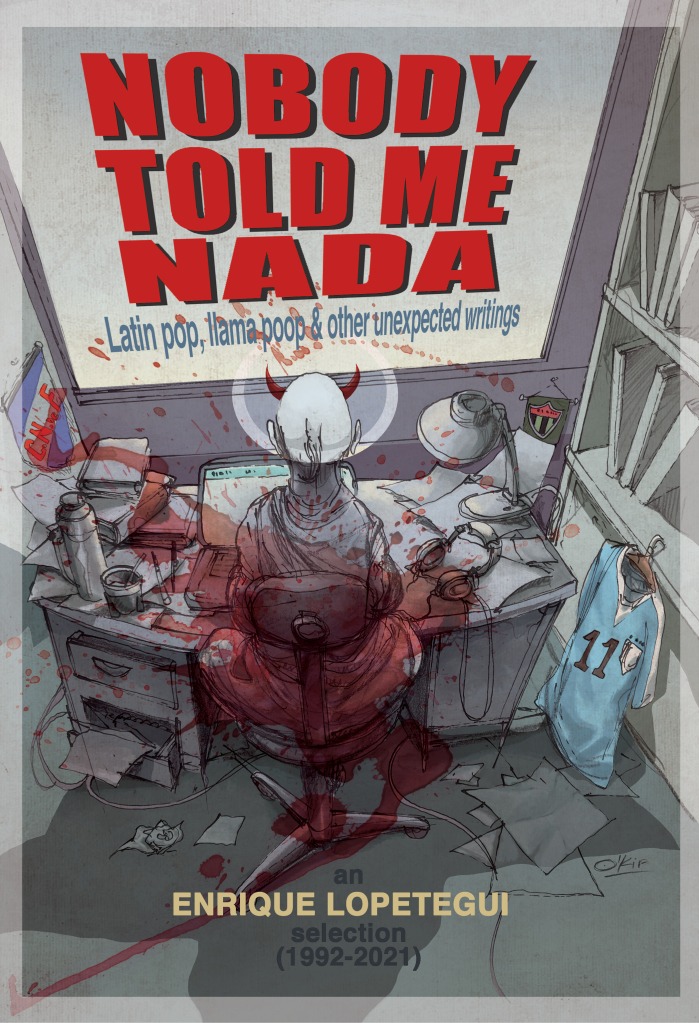
Dark Star: H.R. Giger’s World opens in select cities nationwide on May 15. “H.R. who?” is something the average moviegoer would ask, but when informed Giger (pronounced GHEEgair) is the Oscar-winning man whose inspiration gave birth to the Alien monster, things change.

“Necronom IV,” the painting that inspired the ‘Alien’ monster and gave Giger an Oscar in 1980.
DARK STAR: H. R. GIGER’S WORLD Trailer from Icarus Films on Vimeo.
DARK STAR: H. R. GIGER’S WORLD – Probe the Soul from Icarus Films on Vimeo.
What doesn’t change is the fact that San Antonio remains a sort of movie dumpster, a so-called “secondary market” that always has to wait to see the best films while our powerful neighbors enjoy the party. The movie will be shown in Dallas (May 22-28, Texas Theatre), Austin (May 23-26, Alamo Drafthouse), Houston (May 23-28, Alamo Drafthouse) and Fort Worth (May 28-31, Modern Art Museum of Fort Worth).
For those in other cities, here’s the calendar:
May 15-21 – New York, NY – Landmark Sunshine
May 15-21 – Los Angeles, CA – Landmark NuArt
May 15-21 – San Francisco, CA – Landmark Opera Plaza
May 15-21 – Berkeley, CA – Landmark Shattuck
May 15-21 – Providence, RI – Cable Car Cinema
May 22-28 – Long Beach, CA – The Frida Cinema
May 22-28 – San Diego, CA – Landmark Ken
May 28 – June 4 – Washington, D.C. – Landmark E St
May 28 – June 4 – Vancouver, BC – The Cinematheque
May 29 – June 4 – Denver, CO – Landmark (TBD)
May 28 – June 4 – Columbus, OH – Gateway Film Center
May 29 – June 4 – Philadelphia, PA – Landmark Ritz
A couple of weeks ago I spoke on the phone with director Belinda Sallin, who was in her home in Switzerland.

(Courtesy of Icarus Films)
Right off the bat, your movie (especially the intro) has a chilling effect on the viewer, similar to the one we have when looking at a Giger painting. Was it a conscious effort on your part to make such an un-Hollywood doc?
Thank you very much! I’m happy you feel that way. And yes, absolutely, it was clear in my head that I didn’t want to make a conventional biography, I didn’t want to start with a photograph and go, “H.R. Giger was born in…” You can read all that, it’s been done already, you can find it on the internet or in books. I was so surprised when I met him for the first time, or when I entered his house, I was completely overwhelmed. I thought it was extraordinary how he lived, in his own world, with his art and all of its consequences.
It seems the metalheads and other bands got Giger more than, say, the established art world.
These are the people buying his books, his publications, his posters. [Giger] got the acknowledgments from his fans, but he didn’t get it from the well-established galleries or art institutions. So he was very glad about his fans and he appreciated them a lot. But he was also a shy person, he didn’t like to leave his home. And to interact with his fans was quite difficult for him, but he did it. That heavy metal connection is funny, because that was not his kind of music, not at all, but he was a very open-minded man, he knew when something was special, as in the case of Celtic Frost and Triptycon, and his relationship with Tom Warrior, which is really extreme metal. He loved working with Tom, but it wasn’t his kind of music. His music was jazz; he really liked Oscar Peterson and Miles Davis, things like that.
Did he have a chance to watch the movie, or parts of it, before he passed away?
No, unfortunately. He did see a sort of teaser I did. I wanted to show him what I wanted to do, what my concept and intentions were. And he liked it a lot. It was a short teaser. He said, “Yeah, that’s good, you don’t have to explain everything, I don’t want you to explain everything. It has to be a little bit mysterious … It’s OK if things stay enigmatic.” For me, it was very important that, after his death, Carmen Giger supported us, and she continues to do so. She told me, “Yes, go on, finish the movie.” She saw it before it was released here in Switzerland. She was the first person to see it, and she was really moved. She told me he would’ve liked the movie, because “it’s a very deep portrayal of him and it’s true.” This meant a lot to me.
He passed away shortly after you finished shooting, but it was obvious that he was very frail. How difficult it was to shoot his scenes?
It was a challenge to shoot with him. He was only available for very short periods of time so I had to carefully consider what I wanted from him, what scenes I needed to do with him. And he didn’t like to talk anymore. For much of the film he is silent, but he never liked speaking about his art. This is important to know. It was a relief for him when I showed him the teaser and told him we didn’t have to do hours and hours of interviews.
When did you feel it was time to make the movie?
I’ve known his art since my youth, I saw Alien and I was shocked… (laughs) I saw pictures, posters, books… I was always intrigued and fascinated by his art. But I lost it a little bit out of my sight over the years, until one evening I met a former life partner of his, Sandra Beretta. This was really a special moment for me, because she started to tell me about him and I was immediately interested, and all these images I had in my head returned, I had never forgotten them. I think this is the quality and power of H.R. Giger’s art: Once you see his work, you don’t forget it.
Tell me about the museum and bar. Only Giger could’ve come up with something like that…
Yes! The museum, was built because Giger didn’t get the acknowledgment of the established galleries and institutions in Switzerland. He said to me, “They won’t show my work here, so I had to build my own museum.” He realized all his dreams as a child, and he built his museum in an old castle. It’s an amazing place, in the mountains, a little village, and the bar is next to the castle.
Was that always the case or they stopped showing his art as soon as he became famous because of Alien?
There are several reasons. I think Giger was difficult to categorize. Even when he was categorized under realism or fantastic realism, he also had a strong relationship with pop culture. He had many tools and outlets. He made films, comics, music videos, design… In the 1970s this was quite unusual. Then in 1980 he won the Oscar, and this was quite a scandal. He was taken less seriously by the art world than he deserved. But it’s hard to say whether winning the Oscar was a damage for him, because he became world famous. He was not interested anymore in this discussion, at least in the last two years of his life, when I met him. “They don’t show my art in these institutions, so what?” Maybe his composure came from the fact that he knew he didn’t need the establishment to enjoy worldwide success. Who needs institutional approval when you already reach countless people all over the world? The thing that impressed me the most about him is that he followed his dreams regardless of what people thought or said. He did what he wanted to do, he took his own path.

Courtesy Icarus Films






